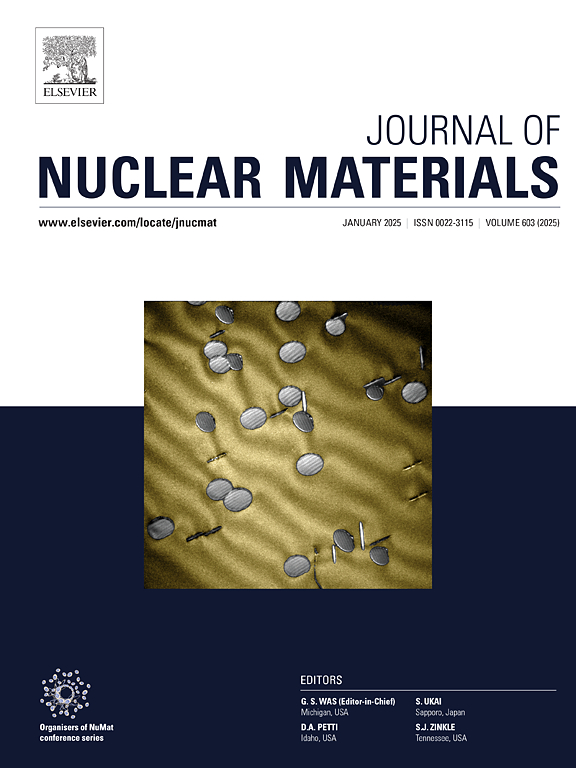Assessing shallow cracking in copper pipes under various conditions
IF 2.8
2区 工程技术
Q3 MATERIALS SCIENCE, MULTIDISCIPLINARY
引用次数: 0
Abstract
The corrosion in two ex-service copper pipes removed from the shutdown National Research Universal (NRU) reactor after 40 years of irradiation was investigated, focusing on localized corrosion. One pipe was exposed to humid air with a temperature of around 40 °C and a gamma radiation dose rate of 0.015 Gy/h, while the other sample was remote from the reactor and almost non-irradiated. Nanoscale analysis revealed shallow cracking and nitrogen at the crack tips of both the irradiated and non-irradiated cross-sections. However, the low-dose irradiation caused propagation of the pre-existing cracks observed in all Cu piping and did not initiate these defects. This research shows that stress corrosion cracking is unlikely to be enhanced in a defect-free electrodeposited copper under low-dose irradiation, similar to that expected for used fuel containers in Canada, in a deep geological repository.
不同条件下铜管浅裂的评定
对NRU反应堆经过40年辐照后取出的两根退役铜管的腐蚀进行了研究,重点是局部腐蚀。一根管子暴露在温度约为40°C、伽马辐射剂量率为0.015 Gy/h的潮湿空气中,而另一根样品远离反应堆,几乎没有受到辐射。纳米尺度分析显示,辐照和未辐照截面的裂纹尖端均存在浅裂纹和氮。然而,低剂量辐照引起了所有Cu管中已有裂纹的扩展,而不是这些缺陷的初始化。这项研究表明,在低剂量辐射下,无缺陷电沉积铜不太可能增强应力腐蚀开裂,类似于加拿大深部地质储库中使用过的燃料容器。
本文章由计算机程序翻译,如有差异,请以英文原文为准。
求助全文
约1分钟内获得全文
求助全文
来源期刊

Journal of Nuclear Materials
工程技术-材料科学:综合
CiteScore
5.70
自引率
25.80%
发文量
601
审稿时长
63 days
期刊介绍:
The Journal of Nuclear Materials publishes high quality papers in materials research for nuclear applications, primarily fission reactors, fusion reactors, and similar environments including radiation areas of charged particle accelerators. Both original research and critical review papers covering experimental, theoretical, and computational aspects of either fundamental or applied nature are welcome.
The breadth of the field is such that a wide range of processes and properties in the field of materials science and engineering is of interest to the readership, spanning atom-scale processes, microstructures, thermodynamics, mechanical properties, physical properties, and corrosion, for example.
Topics covered by JNM
Fission reactor materials, including fuels, cladding, core structures, pressure vessels, coolant interactions with materials, moderator and control components, fission product behavior.
Materials aspects of the entire fuel cycle.
Materials aspects of the actinides and their compounds.
Performance of nuclear waste materials; materials aspects of the immobilization of wastes.
Fusion reactor materials, including first walls, blankets, insulators and magnets.
Neutron and charged particle radiation effects in materials, including defects, transmutations, microstructures, phase changes and macroscopic properties.
Interaction of plasmas, ion beams, electron beams and electromagnetic radiation with materials relevant to nuclear systems.
 求助内容:
求助内容: 应助结果提醒方式:
应助结果提醒方式:


